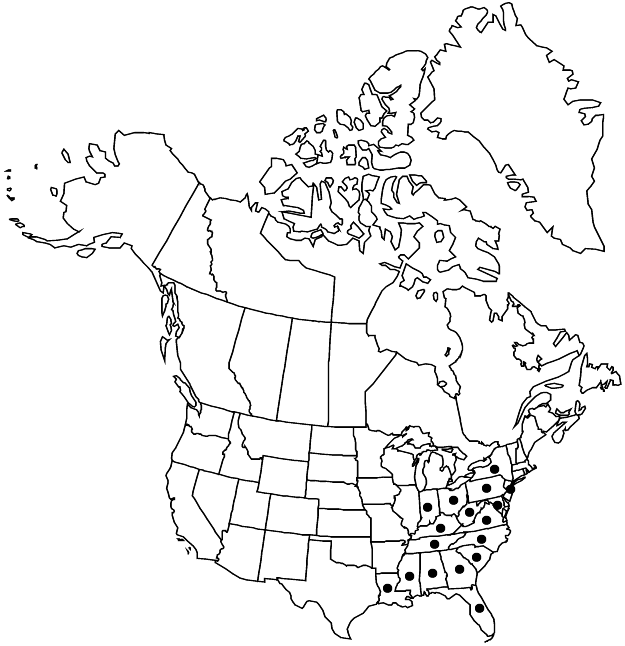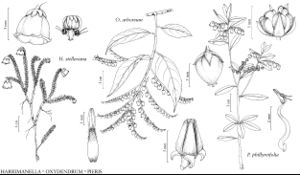Oxydendrum arboreum
in A. P. de Candolle and A. L. P. P. de Candolle, Prodr. 7: 601. 1839,.
Plants to ca. 25 (–35) m, with sour-tasting sap. Stems terete. Leaf-blades turning red in autumn, 5.5–23.5 × 2–8 cm, base cuneate to rounded, apex acute to acuminate. Flowers: calyx lobes 1–2 × 0.7–1.4 mm; corolla 4–7 × 2.5–5.5 mm; filaments 2–3.5 mm; anthers with locules narrowed distally, tubulelike; style strongly impressed into apex of ovary. Capsules 3.5–8.5 × 2–4 mm, unicellular-hairy; placentae basal. 2n = 24.
Phenology: Flowering late spring–summer.
Habitat: Usually well-drained, acid, broadleaved forests on slopes, bluffs, in ravines, or along streams, ecotone areas in pinelands, swamp margins
Elevation: 0-1700 m
Distribution

Ala., Fla., Ga., Ind., Ky., La., Md., Miss., N.J., N.Y., N.C., Ohio, Pa., S.C., Tenn., Va., W.Va.
Discussion
Oxydendrum arboreum is often used as an ornamental; it sometimes persists after cultivation (or rarely escapes from cultivation) in regions north of its native range; specimen-based records from New Jersey and southern New York appear to represent such escapes from cultivation.
Selected References
None.
Lower Taxa
"/4" is not declared as a valid unit of measurement for this property.
